The following propeller shafts are available on this vehicle:
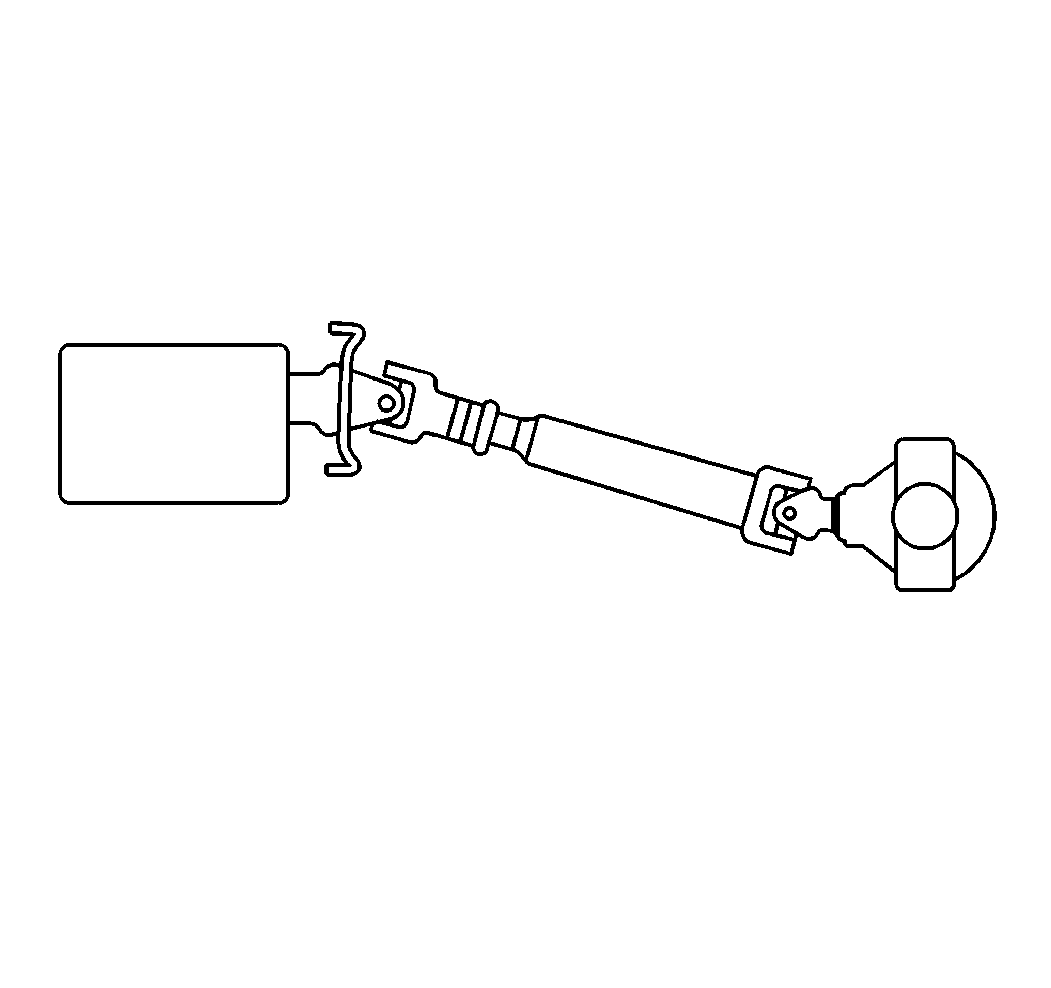
| • | Single propeller shaft |
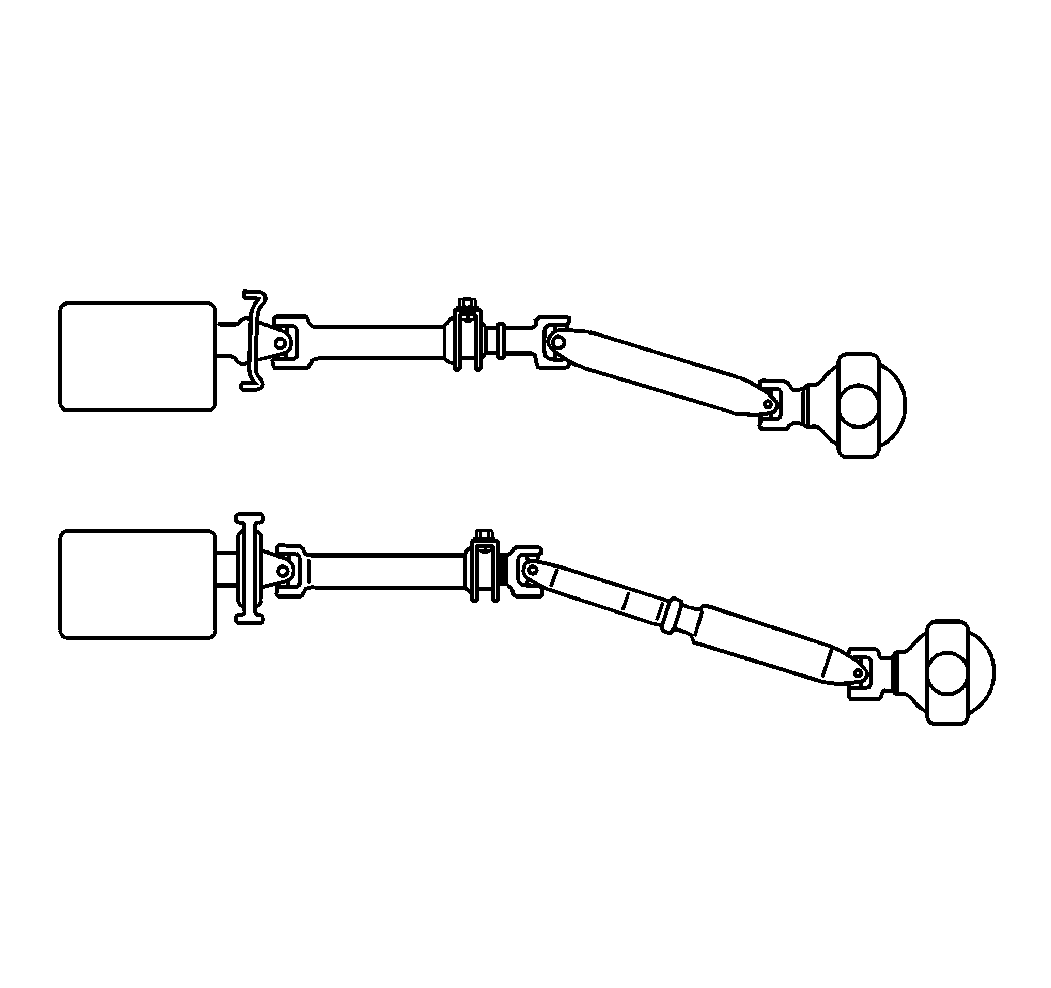
| • | Dual propeller shafts |
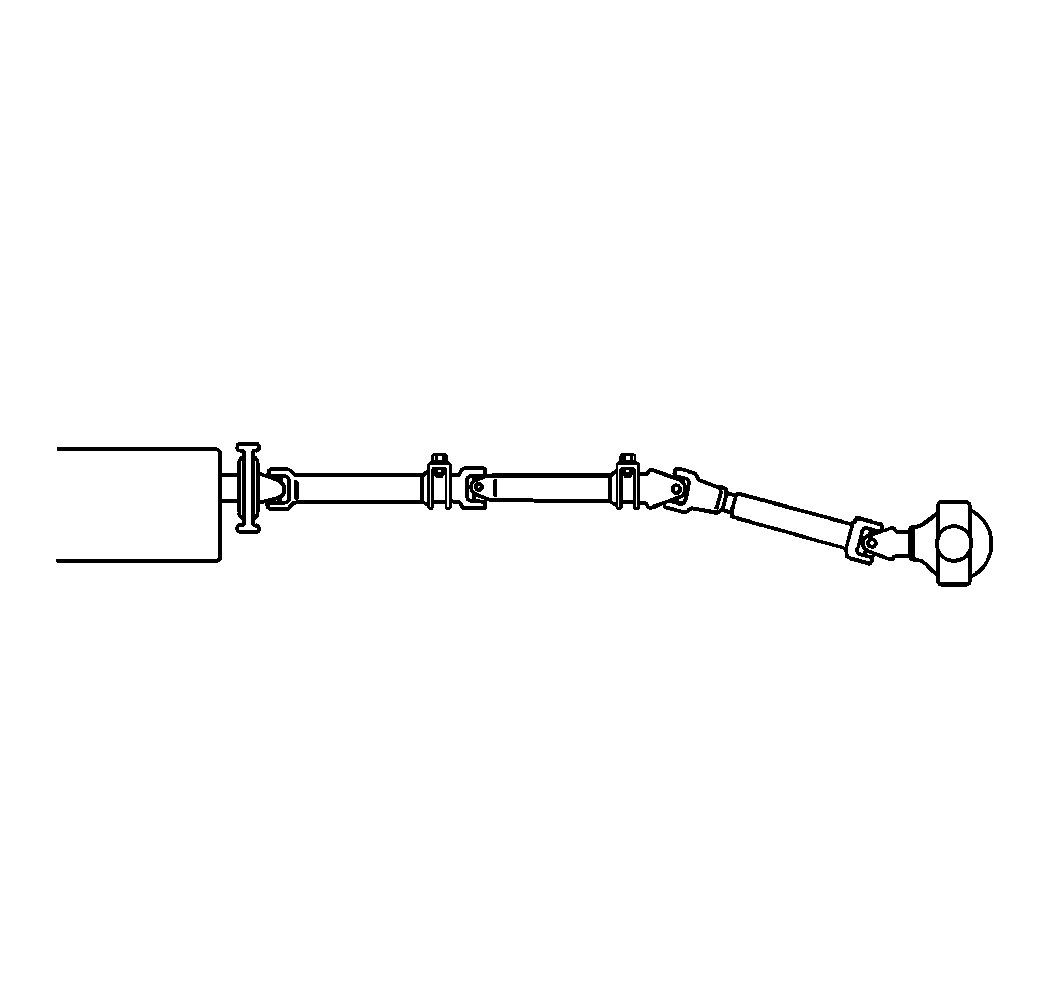
| • | Multi-propeller shafts |
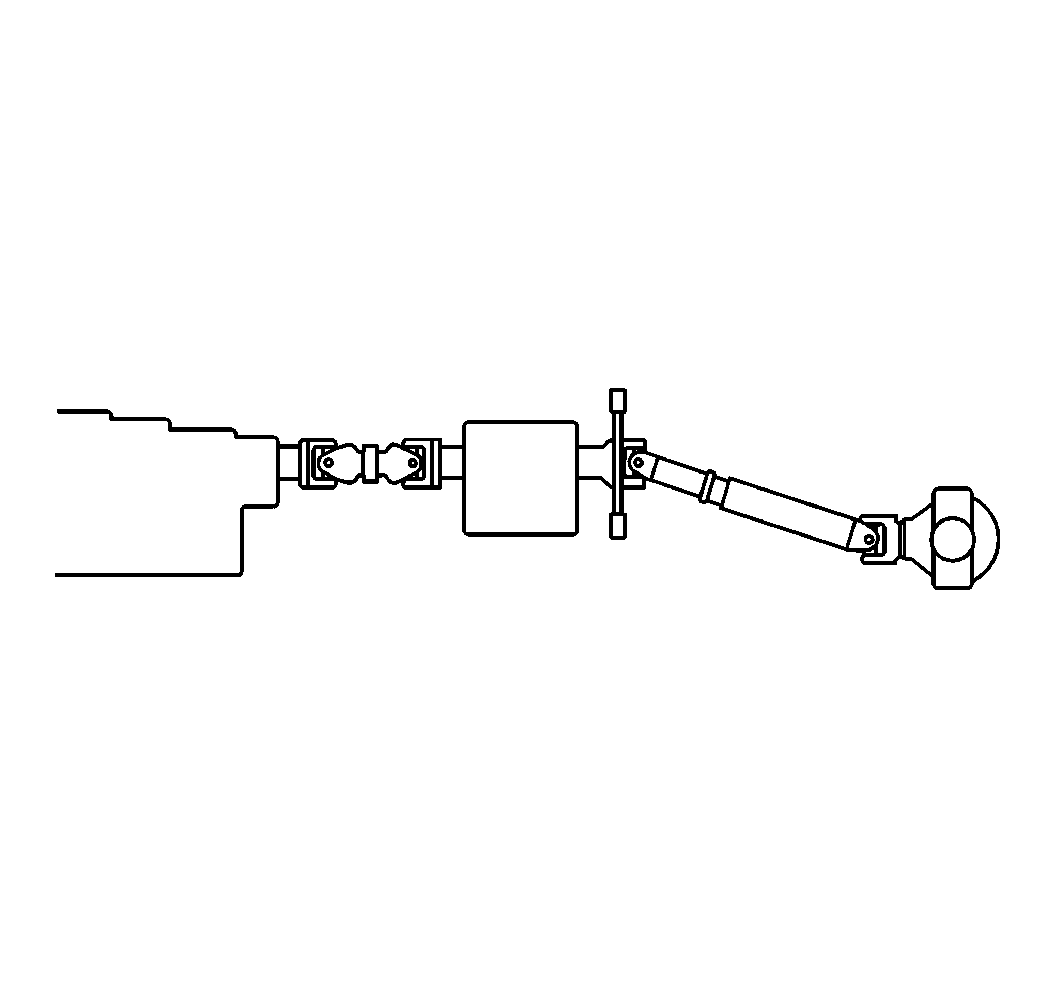
| • | Propeller shaft with an auxiliary transmission |
Torque is transmitted from the transmission to the rear axle through 1 or more propeller shafts and universal joint assemblies. The propeller shaft and universal joint installations and assemblies used on the vehicles are covered in this service manual. The number of propeller shafts and universal joint assemblies varies with vehicle wheelbases and the combinations or transmission and rear axle equipment.

All propeller shafts (13) are balanced tubular type. A splined slip joint is provided in each drive line. The slip joint is at the forward end of the rear shaft.
Propeller Shaft Phasing
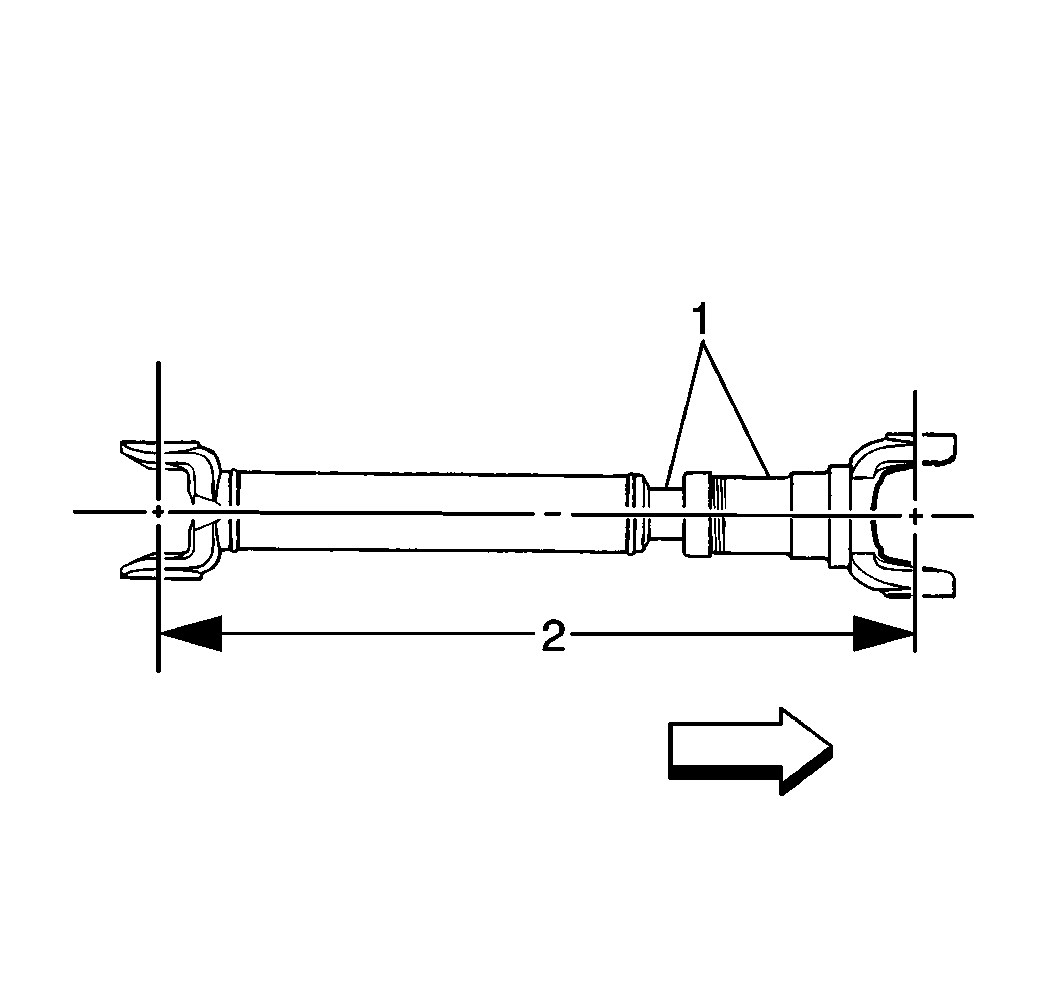
All propeller shafts (1) are designed and built with the yoke lugs (ears) in line with each other. This condition is called phasing.
The shaft will absorb the vibration from the speeding up and slowing down each time the universal joint rotates. Mark the propeller shafts when disassembling, in order to assure proper assembly alignment. Some propeller shafts have alignment arrows stamped on them at the time of production.
Universal Joint
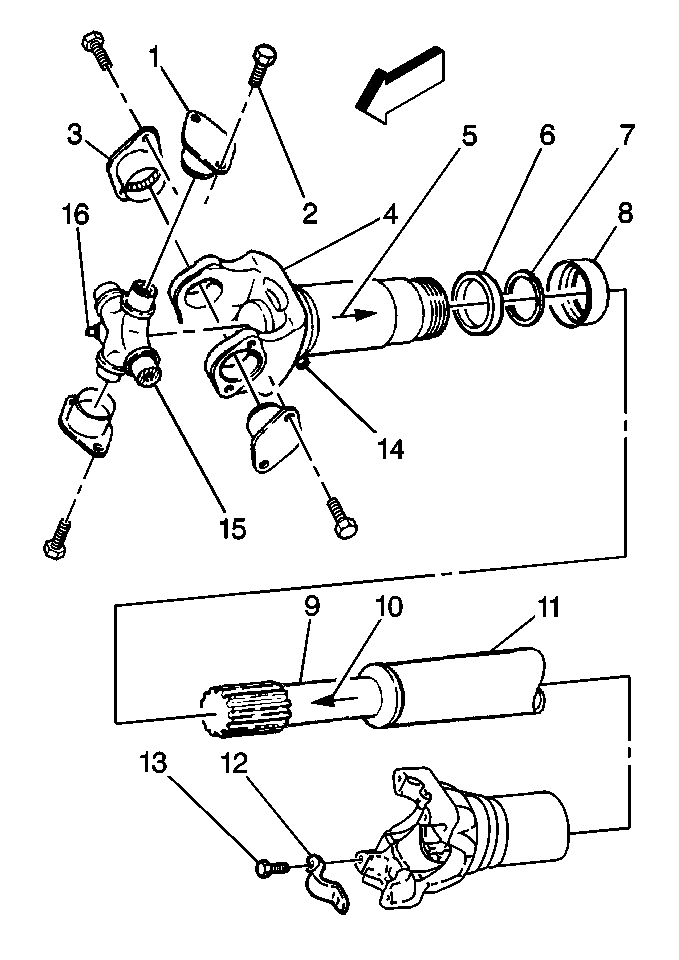
The needle bearings are installed in the bearing cages. The bearing cages are retained in the yoke (4) using bolts (13) with bearing straps (12).
Center Bearing

Center bearings (5) are used in order to support the center portion of the driveline when two or more propeller shafts (13) are used. The bearing (5) is a ball type. The bearing is mounted in a rubber cushion (7) that is attached to a frame cross member. The bearing is prelubricated by the manufacturer.
